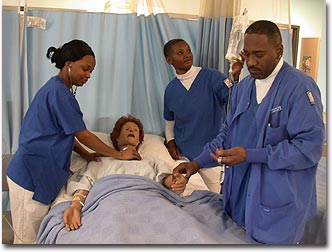License Practical Nurses experience certain challenges in their career. As much as they would want to do more for a patient, their skills are limited. LPN’s are trained and educated to be bedside nurses in the hospitals. They assist the registered nurses and physicians on taking care of the patient. LPNs are mostly limited to basic patient care, administering medications, wound care and some basic nursing assessment with the intervention of RNs and physicians.
Today, the work of an LPN involves more than bedside care and paper work. While the role of LPNs gives them limitation in performing patient care, there are opportunities for LPN to advance in their field.
LPN RN bridge is a course designed to assist Licensed Practical Nurses in the transition of their role into Registered Nurses. LPNs who get into this course will get the opportunity to further their skills and knowledge. This serves as a stepladder for them to be trained and learn more. They can advance in their field with more understanding of the human body. LPN RN bridge programs vary from one school to another. They will be trained to conduct patient assessment and care planning. as well as advance pharmacology, pathology and physiology.
LPN to RN bridge programs are structured on LPNs’ knowledge which they have gained from their experience. They will be offered credit for LPN education or working experience. LPNs take test on certain subjects. If they obtained a high score in that particular subject, they will be given credit even without them taking the class. As stated earlier, LPN to RN bridge courses vary from one school to another. There are also online schools that offer LPN to RN programs. This provides a flexible option for LPNs. Be sure to look at the educational requirements or if there are any prerequisites for the program.
